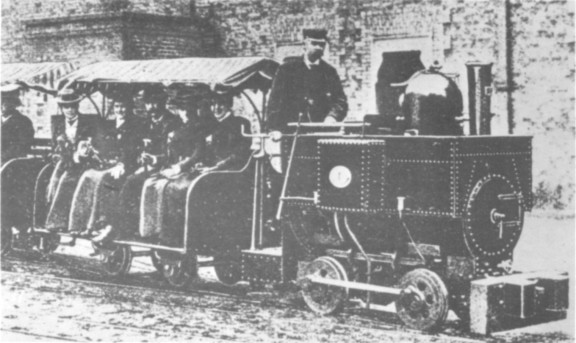
 Back in the article Small Layout Inspirations we took a short look at the Guinness Brewery Tramway. That article mentioned that the brewery had a spiral tunnel (helix) connecting the lower and upper portions of the complex. This became the inspiration for the Brewery Tramway layout presented here.
Back in the article Small Layout Inspirations we took a short look at the Guinness Brewery Tramway. That article mentioned that the brewery had a spiral tunnel (helix) connecting the lower and upper portions of the complex. This became the inspiration for the Brewery Tramway layout presented here.
The Guinness Brewery was started in the 1700’s and became the largest brewery in Ireland by 1838. By the 1870’s the brewery was so large that it required an efficient way to move products and materials around the array of buildings.
The solution to the transport problem lay in the construction of a narrow gauge railway network serving the entire brewery. Much of the basic system was laid between 1873 and 1877 under the supervision of Samuel Geoghegan who joined the brewery engineering staff in 1872 at the age of 28 and rose to the position of Head Engineer in 1875. Mr Geoghegan set himself certain limits on the size of the narrow gauge lines and rolling stock. The track gauge was settled at 1ft 10in, the loading gauge was to have a headway of six feet and a maximum width of five feet, and the maximum gradient was to be not steeper than one in forty. A difference in levels of about 50ft existed between the old brewery and the newer land which sloped sharply down to the Liffey, the two areas being separated by James’s Street.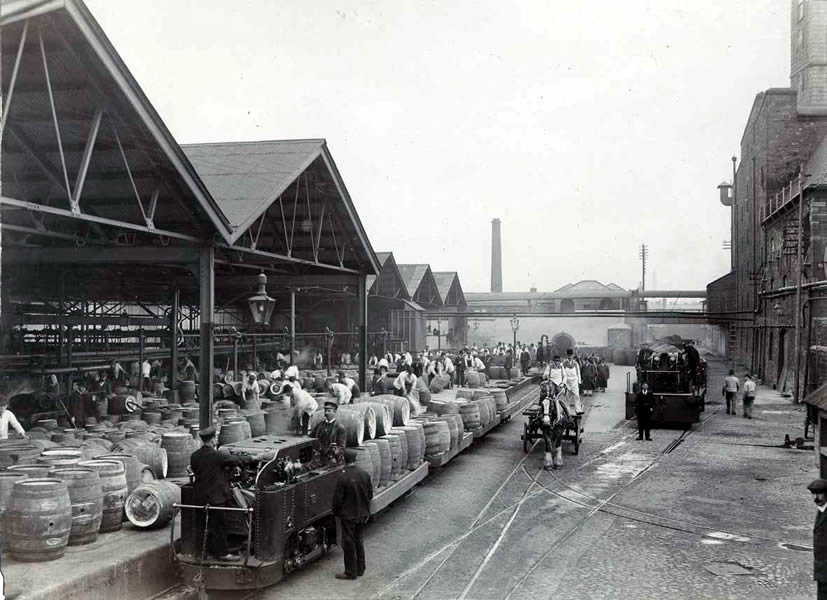
To connect the two halves of the works and overcome the difference in levels, Mr Geoghegan constructed a spiral tunnel in the old brewery and tool the narrow gauge line under James’s Street. The spiral section replaced a short-lived hydraulic lift, a clumsy and slow apparatus which could only manage to tale one wagon at a time, causing trains to be broken up and re-assembled on different levels. The single track spiral tunnel contained the line’s steepest gradient, 1 in 39, and, in 2.65 turns raised the line about 35ft, with a spiral radius of 61.25ft.

The small layout design includes a helix that is very closely proportioned to the Guinness prototype helix. The 61.25 radius in HO scale roughly equals an 8.5 inch radius. I reduced the radius to 7.5 inches to give a little side clearance at the edges and stay inside an 18 inch width. For every turn of the helix the height will increase 2.5 inches. The design allows for the modeler to add as many turns to the helix as desired. The design of the second level is set against the backdrop and left edge with the middle open to the lower level. This allows the height to be low and only overhang a limited portion of the lower level.
Operations could allow for up to two operators and one dispatcher to all be working at the same time. With a long passing siding and several areas of the plant to be serviced there will be much to do and room to do it. The lower rear track also allows to adding and removing cars to vary the interest. The upper level has a transfer to a standard gauge railway (done as flats in the rear).
Records indicate that the prototype used a variety of motive power over the years including, steam, diesel and gasoline locomotives. Diesels replaced the steam locomotives about 1940. The first diesel was a seven ton, 37 horsepower “Planet” diesel locomotive was produced by F.C. Hibberd & Co. Ltd., Park Royal, London.
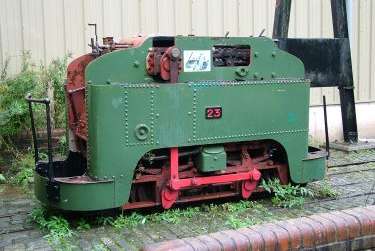
The wagons that made up the narrow gauge trains were of singularly few types. The standard tip wagon, built to carry grain, hops and other bulky goods about the brewery, was built as large as possible within maximum limits of a width of five feet, overall length of eight feet, a height of six feet, and a three feet wheelbase. These four wheeled vehicles had a maximum capacity of eighty cubic feet and a weight in working order of 4 ton. The wagon body, made of bin steel plate, rested on end frames, with rollers enabling the body to be tipped sideways when the load was to be discharged.
Loads too large for the tip wagons were conveyed on bogie flatcars which had a tare weight of about 1 ton 8 cwt. Large numbers of these vehicles were constructed, but there is nothing unusual except their application to such a small gauge, and that the couplings were carried on the end of the bogie and not on the wagon body.
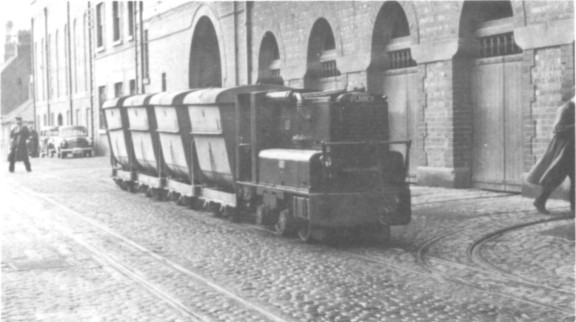
There were also a few four wheeled vehicles with seats and canopies, painted dark blue, which were provided for the conveyance of parties of visitors about the works.

More information on the Guinness Brewery Tramway can be found at http://www.irsociety.co.uk/Archives/22/Guinness.htm.
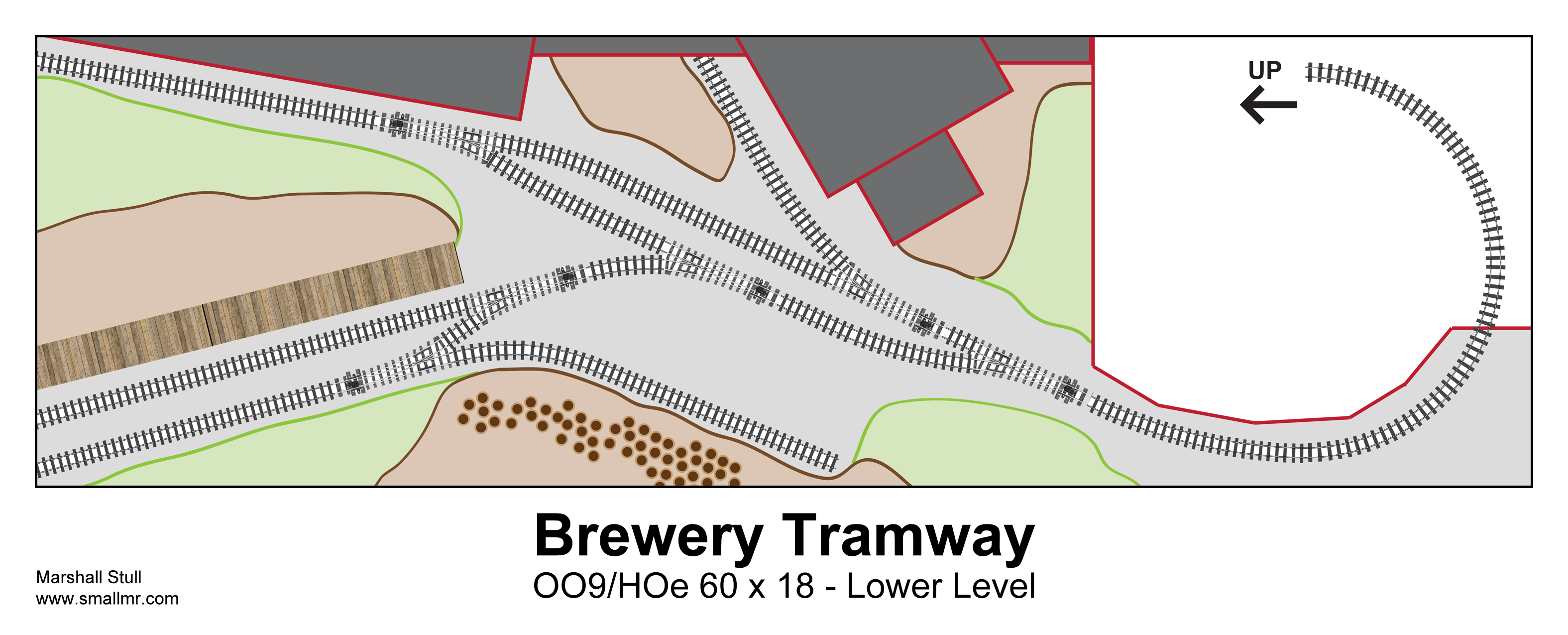
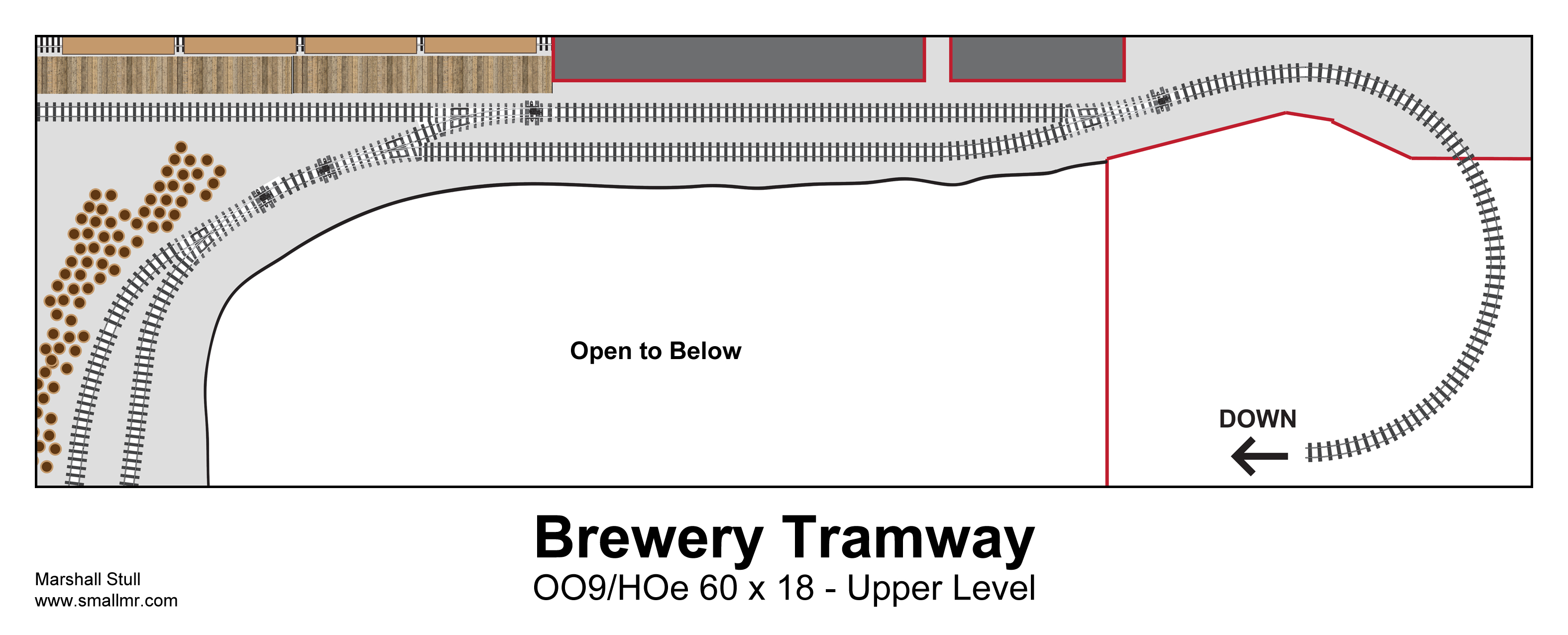
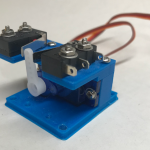
2 thoughts on “Brewery Tramway”